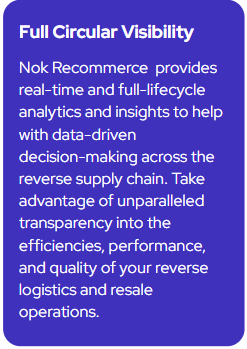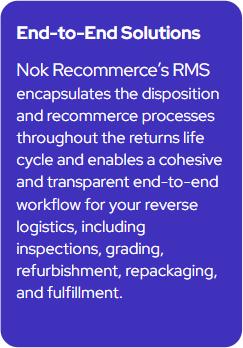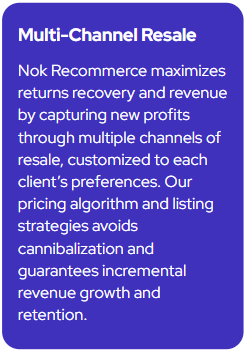The Problem with Free Returns
‘Free returns’ have become table stakes for retailers as almost half of U.S. consumers consider the offering to be “very or extremely important” when choosing whether to make a purchase. This has led to an average rate of return of more than 16.5% and reaches over 20% for purchases during the holiday season.
With the increase in consumer spending this year, and projected year-over-year growth of spending during the holiday season, it is estimated that returns will cost U.S. businesses nearly $1 trillion in 2023. More than a quarter of this will be from merchandise that was purchased during the holiday shopping season.
What happens to the returned merchandise? While some is stored in warehouses and some sold to liquidators for pennies on the dollar, the unfortunate reality is most ends up in landfills. Based on current sales projections, it is expected that the amount of products that end up in landfills will exceed 10 billion pounds.
How has this become an acceptable industry practice?
Over the last decade, this problem has consistently grown worse, both from environmental and revenue standpoints. We believe that it should be unacceptable for brands and retailers to send their returned and excess merchandise to landfills.
In this report, we outline the details of this industry-wide problem, provide insights about the circular economy, and share solutions–implementable in weeks–that significantly reduces what ends up in landfills and recovers more than 30% of lost revenue from returns.
The Circular Economy by the Numbers
The amount of returns is at an all-time high. Currently, that merchandise is not resold by the brand or retailer and ends up in landfills, warehouses, or sold to liquidators. Here is an overview of the situation by the numbers in 2023:
The consumer demand for returns is real
Projected impact of returned merchandise in 2023
The rate of returns increases for items purchased during the holiday shopping season
The circular economy solution

Potential impact of the circular economy in 2023

A Real Solution for Retailers and Brands
The structure of the circular economy already exists and there is an opportunity for companies to begin operating within this system immediately. This can yield substantial benefits for retailers and brands as soon as next year, especially following the post-holiday Q1 surge in returns. The following use case shows the very real potential impact that implementing this solution could have for a retailer or brand in 2024:
A retailer that sold $1 billion in revenue during 2023 is likely to experience revenue losses of nearly 20%, or about $180 million due to returned items. These returned items are often found languishing in warehouses or may be on their way to landfills.
However, if this retailer were to adopt a circular operating system at the start of 2024, it could potentially recover 30% to 40% of this lost revenue, likely amounting to more than $60 million, through practices such as return processing, refurbishment, and resale of returned products. This recovery figure far surpasses the combined total of revenue from products typically sold to liquidators and third-party resellers.
Moreover, the necessary resources for implementing this entire process are readily available to the market and can be executed in weeks by collaborating with recommerce and reverse logistics partners. This collaboration streamlines the implementation process, reduces the time required, and eliminates the need for substantial capital investments.
There are additional benefits beyond the recovered revenue:
Sustainability: less merchandise sent needlessly to landfills.
Lowered Warehouse Costs: It reduces the expenses associated with warehousing, especially for companies with significant stockpiles of old inventory.
Alternative Dispositions: Returned items can be repurposed for warranty replacements, event activations, and more.
Once this system is in place, the same strategies for reselling returned merchandise can also be applied to sell excess inventory languishing in warehouses or being removed from shelves following the holiday season.
Implementing a Circular Operating System
To quickly enter the circular economy, brands and retailers must adopt a circular operating system, which is made up of three essential components: returns, reverse logistics, and resale.
Returns
The initial component involves seamlessly routing returned products to a recommerce or reverse-logistics facility. This process can be easily integrated with preferred Return Merchandise Authorization (RMA) providers, which limits changes to the current returns process and preserves the current experience for customers. The RMA must coordinate the receipt of the products, and the process of entering the item into the circular operating system, to begin the reverse logistics and refurbishment process.
Reverse Logistics
The next component is reverse logistics, often referred to as the reverse supply chain, which requires facilities capable of refurbishing and repackaging merchandise. During this process the returned products are meticulously inspected, refurbished, graded, repackaged, and prepared for fulfillment. Specialized software, such as Nok Recommerce’s RMS, streamlines the management, tracking, and deployment of these processes across the reverse supply chain. Businesses can opt for in-house facilities or outsource this aspect. Remarkably, more than 80% of durable goods can be successfully refurbished and resold.
Resale
The final component, resale, is pivotal in generating additional revenue without compromising the brand’s integrity or undermining marketing efforts for new products. A strategic approach involves promptly reselling refurbished items as soon as they are ready for sale. In order to successfully achieve this, e-commerce campaigns for resold items must:
• Ensure that brand integrity remains intact while avoiding any potential for cannibalizing the marketing campaigns for new products:
• Leverage a multi-channel strategy that diversifies and expands audiences beyond the typical customers who purchase the products
• Implement dynamic pricing strategies to compete effectively with other resellers while maintaining profitability
While some brands and retailers may require a holistic solution that handles all of these components, some of the most likely exist already within a company’s current operation. The key is to partner with a third-party vendor, like Nok Recommerce, that offers an end-to-end solution or can fill in the blanks based on a company’s specific needs.
Why Nok Recommerce?
Nok Recommerce provides brands, manufacturers, and retailers with any part or the entire end-to-end solution for implementing a circular operating system, which removes the challenge of investing capital into the process and allows for implementations to happen quickly. This means that lost revenue from returned or excess inventory can now be recovered and circulated back to the company without affecting brand integrity or equity.
Nok Recommerce proved to be the ideal partner for scaling revenue through returned and excess merchandise. It was fast and straightforward to onboard with Nok Recommerce since they were able to provide a customized solution for our particular circular strategies. As a result, Nok Recommerce helped us to scale our sellable returns by 30% and double our revenue on each unit.
Benefits of Choosing Nok Recommerce





